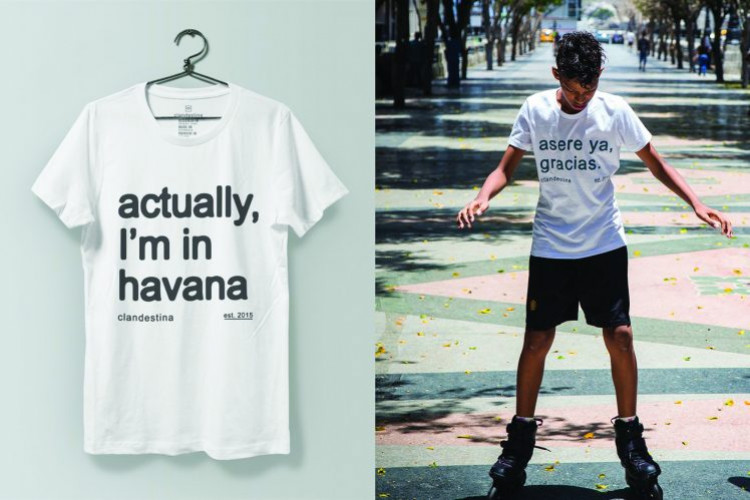Coexistence with Sustainable Pasar Santa
Muhammad Hilmi (H) talks to Intan Anggita Pratiwie and Aria Anggadwipa of the Sustainable Pasar Santa Movement (S).
by Ken Jenie

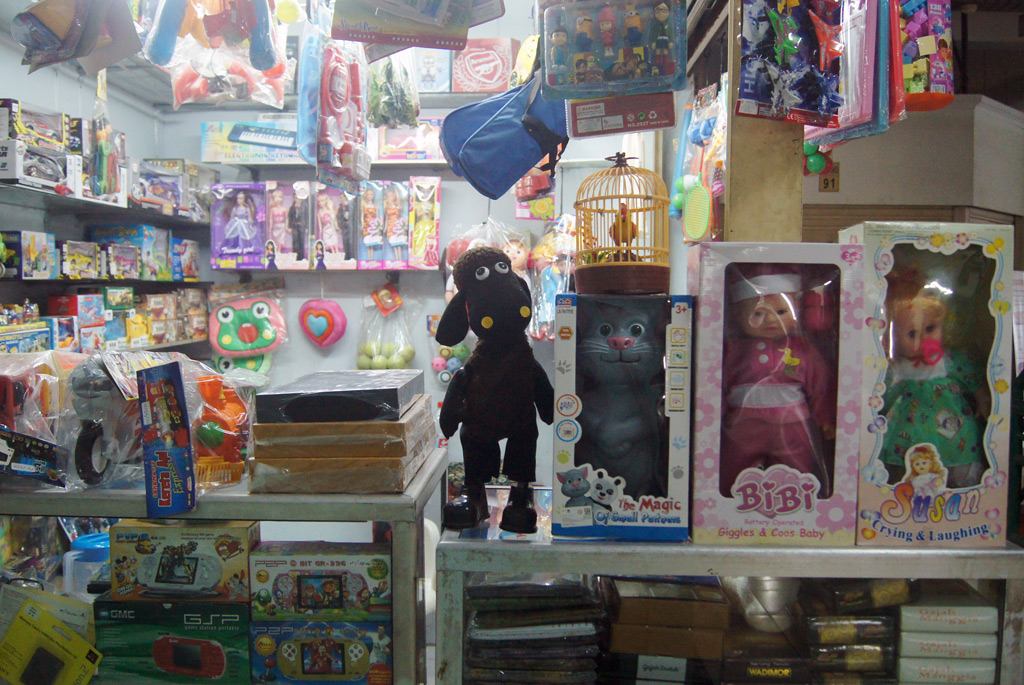

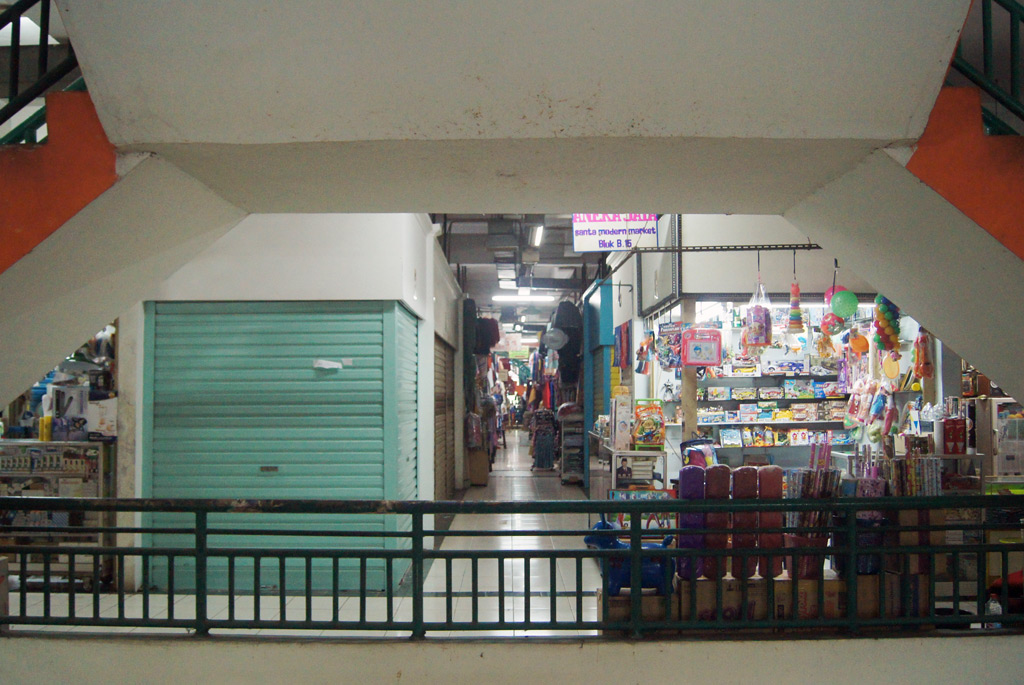
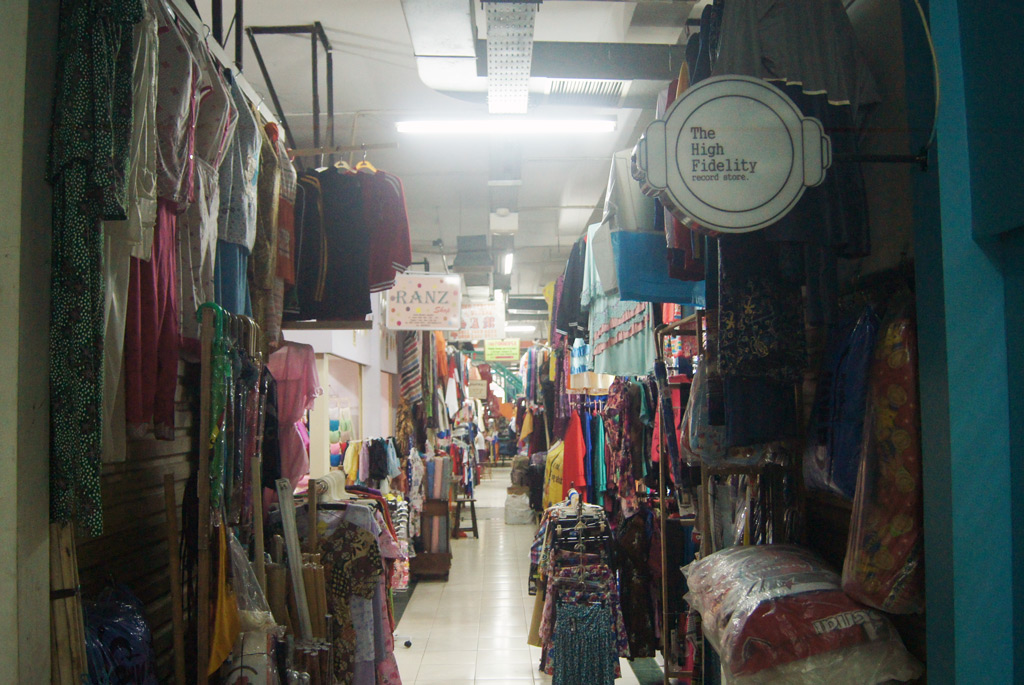
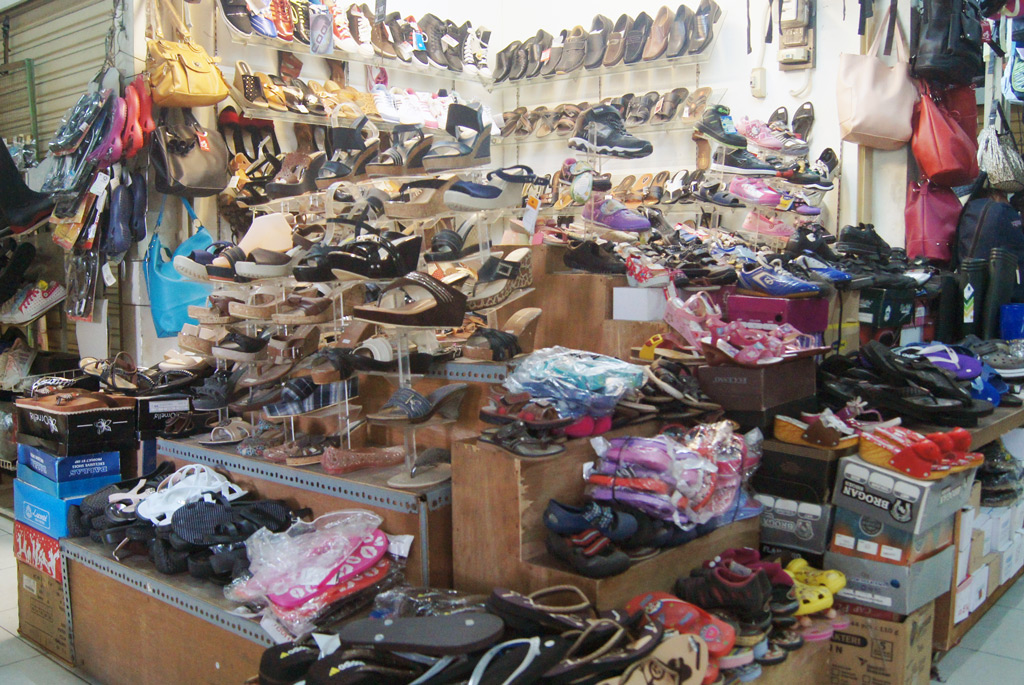
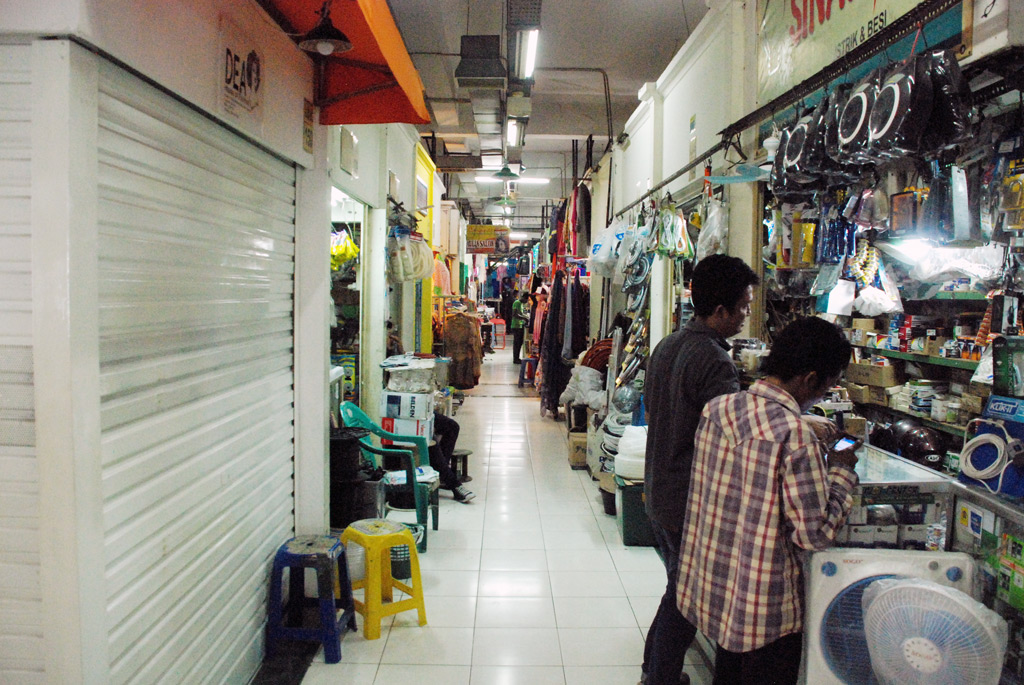
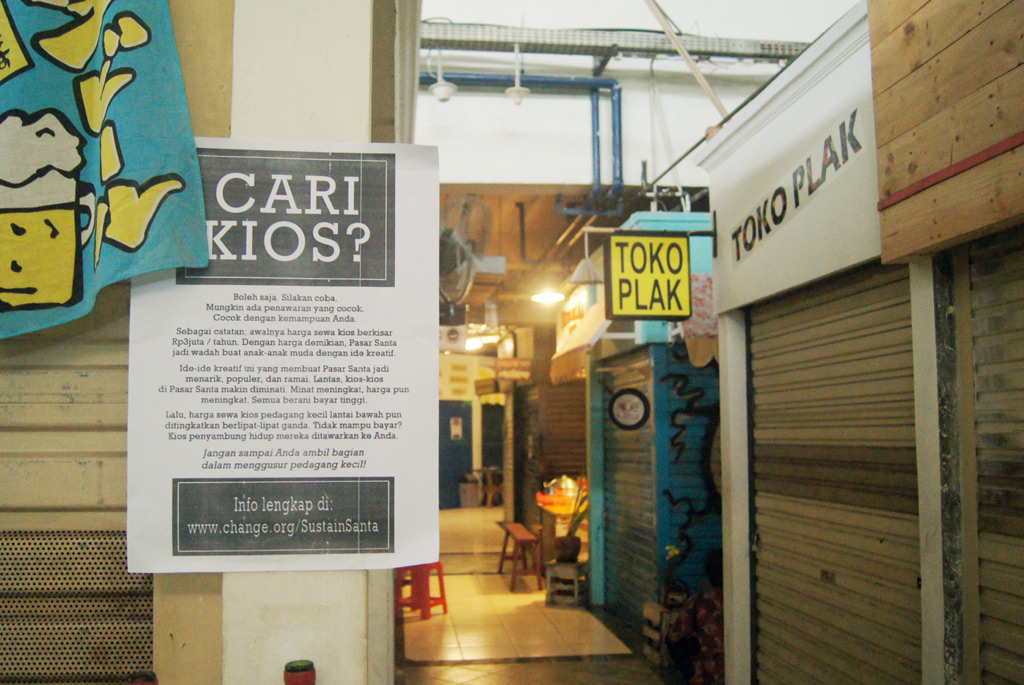



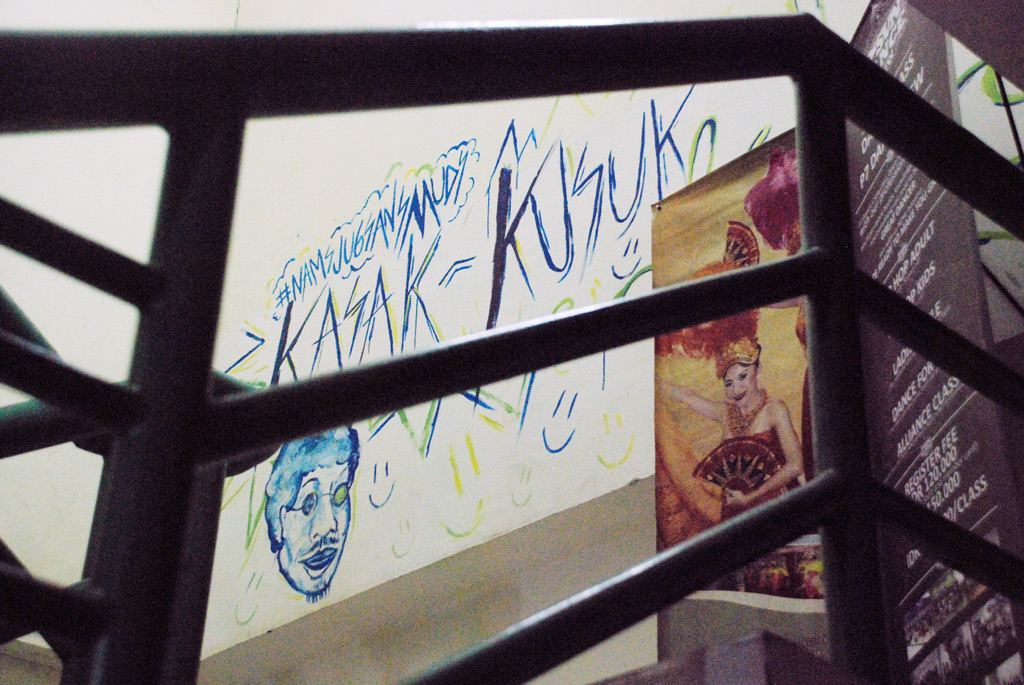
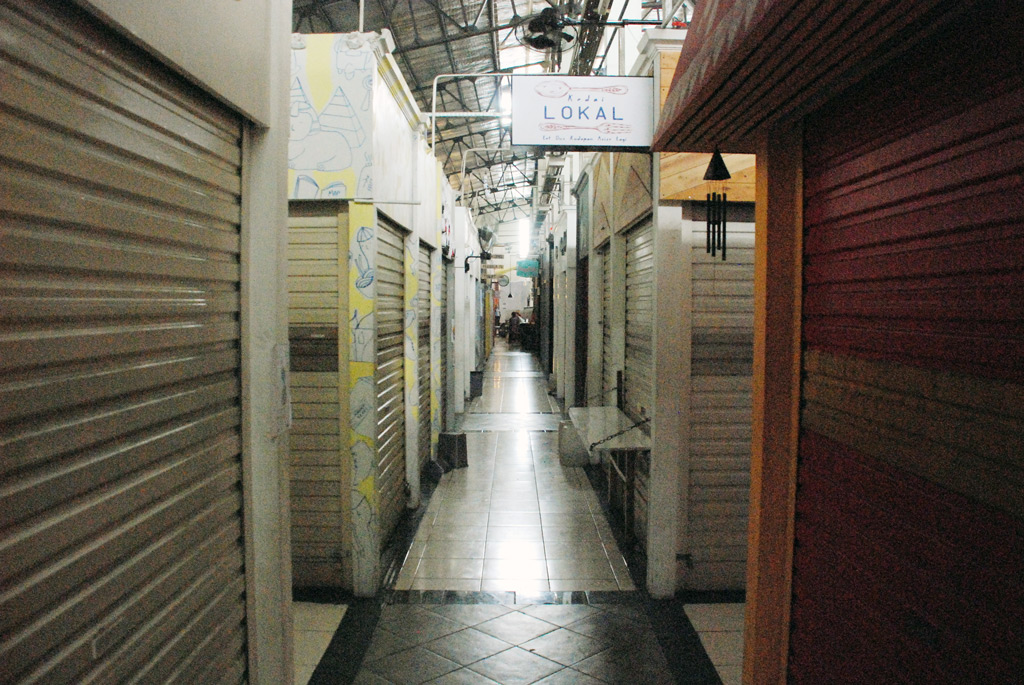



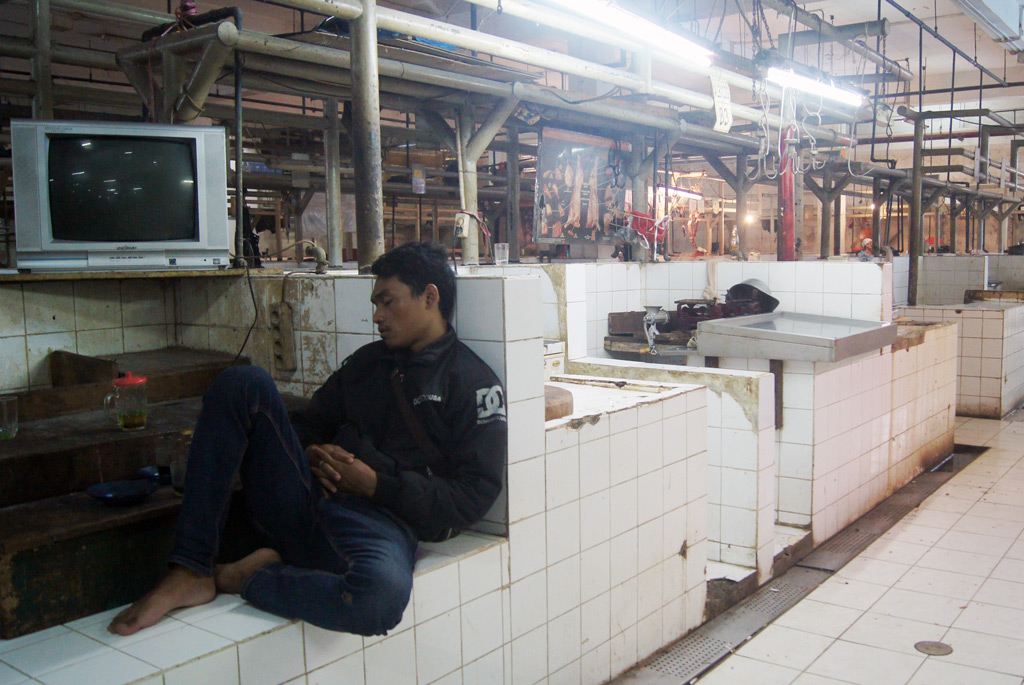

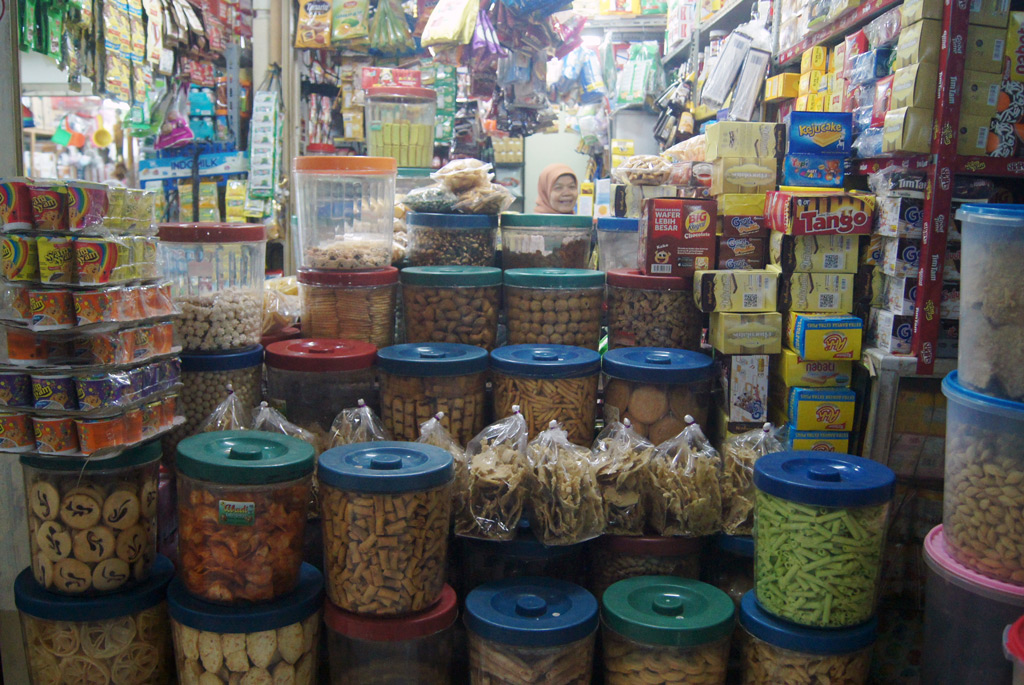



H
Could you explain what is happening at Pasar Santa?
S
We, as a part of the Pasar Santa association, see that Pasar Santa is heading towards a damaging path – the uniqueness of Pasar Santa is facing a big threat. The atmosphere of Pasar Santa as a melting pot for music fans, artists, coffee enthusiasts, greengrocers, tailors, to gold traders is in peril. Though its diverse ambiance is the main element of what makes Pasar Santa as it is right now, this diversity is at risk. The potential of this market attracts many people, including ones with selfish individualistic agendas. Some people come with a certain amount of capital and see the market only as a business opportunity and ignores the real vision and ideology. Sadly this is happening to our Pasar Santa. PD Pasar Jaya, who is responsible for this market, is ignoring the needs of filtering the tenants. Those people with the big amount of capital will take up the space of small traders, and we think that if it happens, it will wipe out the joy of this very market. We did have an unwritten agreement with the owner of the market when we started the movement here about how the market will be filled only with creative entrepreneurs/startups who shares the vision. But it seems that PD Pasar Jaya are ignoring our agreement about it, with the fact that there are so many investors that bought the kiosk only to rent it back at a higher rental price. This is what is happening in the Pasar Santa right now. And the one who are exposed to this are the traders downstairs, with how the rent price are skyrocketed, those traders will have a hard time paying their rent.
H
In a report by Republika.co.id, it was reported that the atmosphere of Pasar Santa is no longer enjoyable, with traffic jams around the area resulting the eviction of street merchants, where on the other hand, those street merchants are protesting the heavy use of cars from the visitors that caused the jam, do you guys have any thought regarding this matter?
S
I think we need to clarify some points here – this Sustainable Santa movement has nothing to do with the street merchant’s eviction. The street merchant eviction is part of a program by the government of Jakarta, and it’s happening around Jakarta-not only in Pasar Santa area. The government is disciplining the illegal street merchants from around the city. Unfortunately, the eviction that happened around Pasar Santa is twisted by certain media to build an artificial dispute between the modern kiosk and the traditional ones. When the real fact is that there is no problem between us. The illegal street merchants is a whole different issue, it’s completely unrelated from our movement.
We also should avoid the use of word “eviction” here, because that isn’t what is happening exactly. It’s not like the merchants will get evicted. The threat that we are facing now is that most of the merchants will not be able to continue their business due to the irrational amount of the raise in rental fees, and also the existence of an opportunist realtor.
The main goal of Sustainable Santa is to keep the diverse ambiance and creative atmosphere around. Even if there’s a raise in the rental price eventually, it will come with a more rational number. So that the startups and the traditional sellers still be able to afford it.
H
How’s the relation between the old kiosk owners and the modern ones?
S
Our relation is healthy. We admit that it took time to get used to each other, just like any relations between human beings – people need time to get to know other people. The association already initiated events that involve all of Pasar Santa – from the basement to the top floor. We also made a program that builds a synergy between the sellers on the top floor to the bottom ones. This program is already running, Sepotong Kue kiosk and Legoh are the examples of food merchants that buy their groceries from the seller downstairs. The other example is how Mie Chino is adapting the program. Whenever the noodle kiosk got an order of beverages, Mie Chino passes the order to Kedai Minuman – a kiosk at the food court who already started their business when the second floor was still pitch black and empty. Sub Store also adapt this program by ordering cardboard box from the seller downstairs. These are the kinds of program we hope could be adapted by other merchants on the top floor. Imagine if those stores on the second floor adapting this program with their own ideas, I think it will be a better atmosphere for all of us.
H
Do you guys have anything to say to the people who consider the conflict on Pasar Santa as a gentrification?
S
If we don’t take quick response on this matter, I’m afraid that the gentrification could really happen at Pasar Santa. The indication is already there, and this Sustainable Santa Movement is our way to prevent it from happening. It’s not a problem that could be resolved instantly, though, because the problem is rooted in many elements of Pasar Santa. What we can do now is to promote the traditional merchants on our social media accounts. But this kind of program needs contribution from both side of the party, we hope that the traditional merchants could get inspired by our movement as well so that the idea of Sustainable Santa could really work.
H
You said earlier that one of the resolutions of this issue relies on the willingness of PD Pasar Jaya to filter the people who are going to invest on Pasar Santa’s kiosks. Could you explain to us about this idea?
S
The easiest way to do this is to ensure that the people who want to invest on the kiosks are startup businesses. I think, it is not a wise decision to let the people with a lot of capital to creep in the neighborhood, just to buy some kiosk and wait until the price is up, then to resell it at irrationally expensive prices. If we let this kind of thing happen, it is a matter of time when we see this phenomenon spread around the floor. One thing that should be underlined is that the market should be the place for real sellers, not for kiosk realtors. This is the other side of the problem that also taking a big part of the gentrification of Pasar Santa.
H
I think that this kind of phenomenon also happened in a lot of other areas, what do you think will be the ideal way to resolve this?
S
I think the one who really has the power to put an end to this problem is the government of Jakarta. Because the land rights of Pasar Santa is the government’s. So, it will be best for us if the government of Jakarta create regulations regarding this problem. I’m not quite sure about how to do this but if the government could take over these markets, and then they could make some kind of segmentation on every market so that they have clear concept for each one of them, and it will be easier for them to filter the ones who are going to invest on the market’s kiosk.
We did meet with the Governor of Jakarta to discuss our problem, and he initiated a brilliant idea about making a card to record the data of the tenant, so that they could monitor their activities. If there’s any sign of misuse of the kiosk, the government will repossess the stall. Overall, he agrees with the concept of this market as a business incubator for startups, and he is going to put some action to keep that spirit.
H
There are a lot of negative sentiments towards the newer tenants of Pasar Santa, with phrases such as “capitalism has destroyed the businesses of the poor” and that what is happening is a “clash of classes” being said by our peers. What are your thoughts about this?
S
Me personally, I believe that a new concept will create friction. People also tend to see things from a negative perspective instead of the positive. As we are in a creative collective who are trying to apply new ideas and concepts, there will always be negative sentiments that appear.
We don’t really care about what is being said about us on social media. The people saying those mean things aren’t doing anything about the situation – they aren’t making the situation better, only worsening, they aren’t contributing anything, if they are really critical and adamant, they should come here and discuss their ideas with us. Perhaps they have brilliant ideas we haven’t thought about.
I don’t think we need to dwell on the criticisms, because there is no point in doing so. We want to focus on Sustainable Pasar Santa and hopefully have the regulation we proposed applied here – that is what’s important.
H
Like you mentioned before, this phenomenon is actually happening in other markets…
S
Yes it is. Another issue that people have talked about is the traffic jams that the popularity of Pasar Santa has created. We have actually promoted the use of public transportation to come here, but the Jakarta mentality is instead to find a solution that creates new problems.
What we campaign is the use of public transportation. People have suggested that the market should improve its parking lot. We don’t believe that it will improve anything, to facilitate a new parking lot the market will have to sacrifice a part of the space – we don’t want that.
The market has been like this since the 70s, it’s a matter of the visitors adjusting to the market, not the market having to adjust to the visitors. If you are interested in visiting Pasar Santa, take a cab if you want to be comfortable, if you want to save money, take the bus – that’s the solution.
People complain about the traffic when they are the ones creating the traffic.
H
How can people be aware of what is happening in Pasar Santa?
S
We have written about it on PasarSantablog.Wordpress.com. We will also create flyers with barcodes that directs visitors to our petition on Change.org. Our Instagram account holder rotates every week, and will continue to campaign our cause.
H
What can the people do help create a better a Pasar Santa?
S
If people want to help create a sustainable Pasar Santa, then try visiting the kiosks downstairs instead of just the top floor. What we imagined in the past was a place where you can hang out and have a coffee upstairs, then go downstairs for grocery shopping. No matter how you see it, grocery shopping at the market will be cheaper than going to a supermarket.
The great thing about this market is that there are so many different vendors. Our friends who have become familiar with all the floors know where to get their dresses tailored, where to shop for groceries, etc.
H
You have mentioned several times on your instagram account that you are open to help create other markets like Pasar Santa. Could you explain?
S
We are open if there are people interested creating ideas for their markets. We are eager to share ideas and discuss helping their markets. We have so far been contacted by markets in Surabaya, Semarang, and Bekasi.








